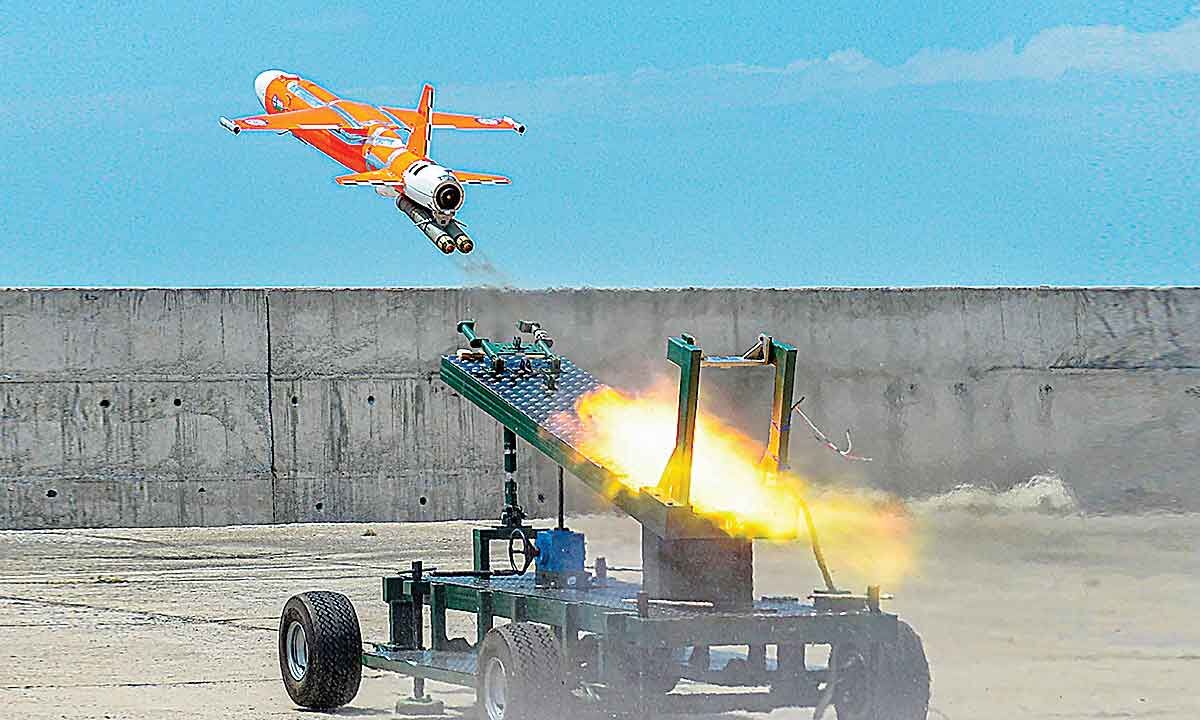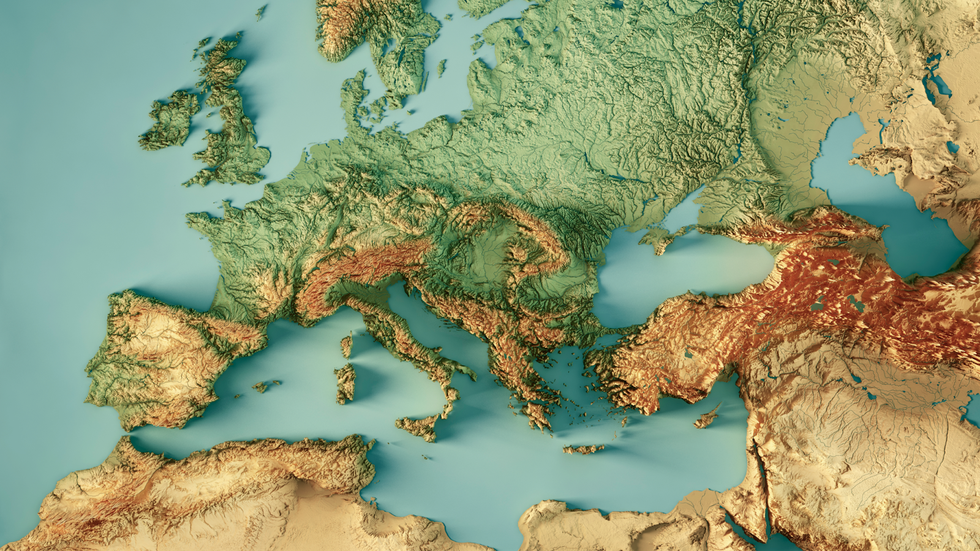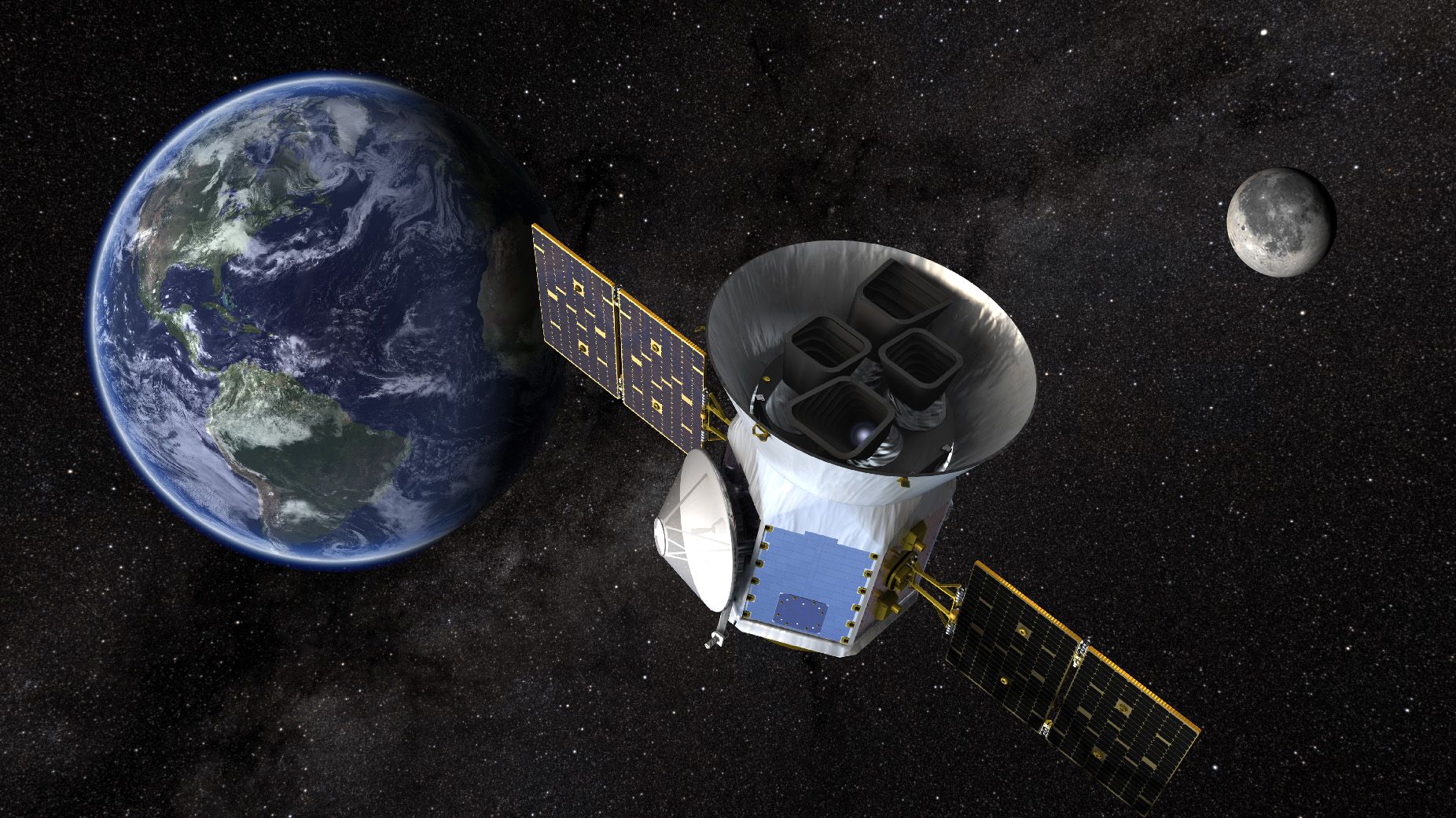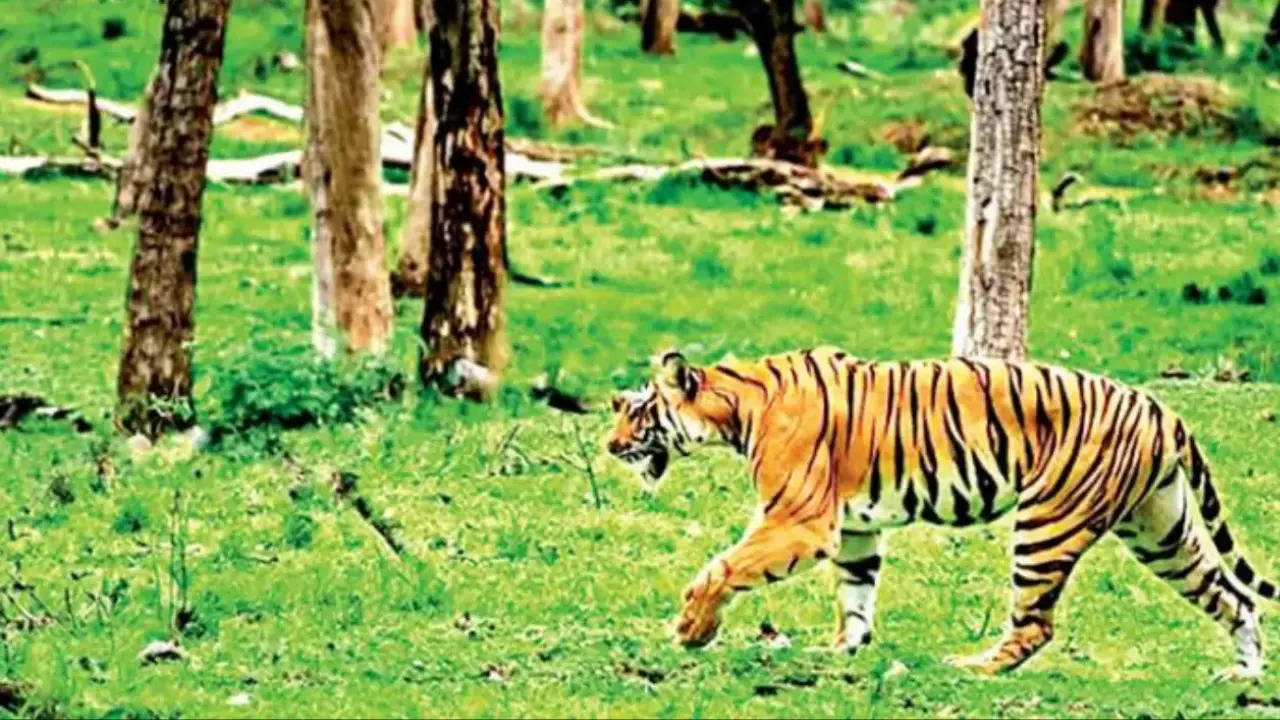Current Affairs – 6th Feb 2024
Black-necked Crane
Recently, the Union Minister of State for Environment, Forest and Climate Change informed the Lok Sabha about the important steps taken to protect Black-necked Crane by the government.

About Black-necked Crane:
- The Black-Necked Crane (Grus nigricollis) is classed as a medium-sized member of the crane family.
- Habitat: The high-altitude wetlands in the Tibetan plateau are the main breeding ground of the species. These wetlands with small mounds provide an excellent habitat for the birds to breed.
- Distribution: This species is found in India, China and Bhutan and breeds in high-altitude wetlands in the Tibetan plateau at elevations of 2950-4900 m above mean sea level.
- Threats: Habitat loss and degradation related to climate change, changes in agriculture practices, pollution and environmental contamination.
- Conservation status
- IUCN: Near Threatened
- The Wild Life (Protection) Act, 1972: Schedule I
- CITES: Appendix I
- The important steps taken by the government of India to protect bird species include:
- The important habitats of the Black-necked Crane have been notified as Protected Areas, for example, Changthang Sanctuary, Ladakh.
- The Tso Kar Wetlands Complex, an important foraging and breeding ground for Black-necked Crane, has been designated as a Ramsar Site in December 2020.
- The National Wildlife Action Plan (2017-2031) released by the Ministry in October 2017 provides for specific Chapters and priority actions on various aspects of wildlife conservation.
- The Central Government provides financial assistance to State/Union Territory Governments under the Centrally Sponsored Scheme ‘Development of Wildlife Habitats’ for the management of wildlife and its habitat in the country.
- The Government of India has initiated the Mission LiFE (Lifestyle for Environment) programme, which aims to generate public awareness about the environment, and conservation.
Nagoya Protocol
Cameroon recently adopted the Nagoya Protocol on Access and Benefit Sharing.
.jpg)
About Nagoya Protocol:
- The Nagoya Protocol on Access to Genetic Resources and the Fair and Equitable Sharing of Benefits Arising from their Utilisation (the Protocol) is a legally binding global agreement that implements the access and benefit-sharing obligations of the Convention on Biological Diversity (CBD).
- It was adopted by the CBD in Nagoya, Japan, in October 2010 and entered into force on October 12, 2014, 90 days after the deposit of the fiftieth instrument of ratification.
- It provides a transparent legal framework for the effective implementation of one of the three objectives of the CBD: the fair and equitable sharing of benefits arising out of the utilisation of genetic resources.
- What are the benefits?
- It establishes a framework that helps researchers access genetic resources for biotechnology research, development, and other activities, in return for a fair share of any benefits from their use.
- This provides the research and development sector with the certainty they need to invest in biodiversity-based research.
- Indigenous and local communities may receive benefits through a legal framework that respects the value of traditional knowledge associated with genetic resources.
- What does the Nagoya Protocol cover?
- It applies to genetic resources that are covered by the CBD, and to the benefits arising from their utilisation.
- It also covers traditional knowledge (TK) associated with genetic resources that are covered by the CBD and the benefits arising from their utilisation.
Key Facts about the Convention on Biological Diversity (CBD):
- CBD, with 196 contracting parties, is the most comprehensive binding international agreement in the field of nature conservation and the sustainable use of natural resources.
- It was opened for signing at the UN Conference on Environment and Development in Rio de Janeiro in 1992.
- It has three overarching objectives:
- The conservation of biological diversity (genetic diversity, species diversity, and habitat diversity).
- The sustainable use of biological diversity.
- The fair and equitable sharing of the benefits arising out of the utilisation of genetic resources.
- It covers biodiversity at all levels: ecosystems, species, and genetic resources.
- The Conference of the Parties (COP) is the highest political decision-making body of the Convention.
- The Secretariat is based in Montreal, Canada.
- To support the implementation of the CBD objectives, two internationally binding agreements were adopted within the framework of the Convention on Biological Diversity.
- The Cartagena Protocol, which was adopted in 2000 and entered into force in 2003, regulates the transboundary movement of living modified organisms (LMOs).
- The Nagoya Protocol, adopted in 2010, establishes a legally binding framework for access to genetic resources and the fair and equitable sharing of the benefits arising from their use.
Mera Gaon Meri Dharohar programme
Recently, the Union Minister for Culture, Tourism And Development of North Eastern Region informed the Lok Sabha about the Mera Gaon Meri Dharohar programme.

About Mera Gaon Meri Dharohar programme:
- It is a pan-India initiative of the Ministry of Culture under the National Mission on Cultural Mapping and was launched on 27th July 2023.
- It seeks to compile comprehensive information detailing the life, history, and ethos of Indian villages and to make the same available to virtual and real-time visitors.
- Under the MGMD, information is collected under seven broad categories as given below-
- Arts and Crafts Village
- Ecologically Oriented Village
- Scholastic Village Linked with Textual and Scriptural Traditions of India
- Epic Village linked with Ramayana, Mahabharata and/or Puranic legends and oral epics
- Historical Village linked with Local and National History
- Architectural Heritage Village
- Any other characteristic that may need highlighting such as fishing village, horticulture village, shepherding village etc.
- Objective: The main objective of the project is to culturally map India’s 6.5 lakh villages, spanning 29 States and 7 Union Territories, on a comprehensive virtual platform.
- Through MGMD, people will get an opportunity to immerse themselves in the diverse and vibrant cultural heritage of India.
- The core idea behind this project is to encourage appreciation for India’s culture and traditions, paving the way for economic growth, social harmony, and artistic development in rural communities.
- The financial outlay of Rs.353.46 Crore is approved under the scheme of Financial Assistance for Promotion of Art and Culture consisting of 08 scheme components namely;
- Financial Assistance to Cultural organisations with National Presence
- Cultural Function & Production Grant (CFPG)
- Financial Assistance for the Preservation & Development of Cultural Heritage of the Himalayas
- Financial Assistance for the Preservation & Development of Buddhist/Tibetan Organization
- Financial Assistance for Building Grants including Studio Theatres
- Financial Assistance For Allied Cultural Activities
- Scheme for Safeguarding the Intangible Cultural Heritage
ABHYAS
The Defence Research and Development Organisation (DRDO) successfully conducted four flight trials of the high-speed expendable aerial target ‘ABHYAS’ recently.

About ABHYAS:
- It is a high-speed expendable aerial target (HEAT).
- It is designed by the DRDO’s Aeronautical Development Establishment (ADE).
- ABHYAS offers a realistic threat scenario for the practice of weapon systems.
- It is the ideal platform for the validation of Armed Forces equipment slated for induction (only those that require aerial engagement).
- Features:
- It is designed for autonomous flying with the help of an autopilot indigenously made by the ADE.
- It has a radar cross-section and a visual and infrared augmentation system required for weapon practice.
- The target drone has a laptop-based Ground Control System with which the aircraft can be integrated and pre-flight checks, data recording during the flight, replays after the flight and post-flight analysis can be carried out.
Key Facts about DRDO:
- It is the R&D wing of the Ministry of Defence, Govt. of India, with a vision to empower India with cutting-edge defence technologies and a mission to achieve self-reliance in critical defence technologies and systems.
- It is India’s largest research organisation.
- Formation: The organisation was formed in 1958 from the amalgamation of the then-existing Technical Development Establishment (TDEs) of the Indian Army and the Directorate of Technical Development and Production (DTDP) with the Defence Science Organisation (DSO).
- Headquarters: New Delhi.
- It has a network of laboratories engaged in developing defence technologies covering various fields, like aeronautics, armaments, electronics, land combat engineering, life sciences, materials, missiles, and naval systems.
International Centre for Integrated Mountain Development
Experts from the International Centre for Integrated Mountain Development (ICIMOD) declared the Hindu Kush Himalaya region a biosphere on the brink of collapse and called for bold action and urgent finance to prevent nature loss.

About the International Centre for Integrated Mountain Development:
- It is an intergovernmental knowledge and learning centre working on behalf of the people of the Hindu Kush Himalaya (HKH).
- It was formally established and inaugurated on 5 December 1983.
- Mission: To build and share knowledge that drives regional policy and action and attracts investment that enables the diverse countries and communities of the HKH to transition to greener, more inclusive, and climate-resilient development.
- Member countries – Afghanistan, Bangladesh, Bhutan, China, India, Myanmar, Nepal, and Pakistan.
- Governance
- The Board of Governors is the highest governing body of the centre.
- It consists of one representative from each of the eight regional member countries and independent members who are nominated by the ICIMOD Support Group based on their recognized professional expertise and experience.
- Functions
- It serves the region through information and knowledge generation and sharing to find innovative solutions to critical mountain problems.
- It bridges science with policies and on-the-ground practices.
- It provides a regional platform where experts, planners, policymakers, and practitioners can exchange ideas and perspectives towards the achievement of sustainable mountain development.
- Headquarters: Kathmandu, Nepal
Key facts about Hindu Kush Himalaya
- The HKH region extends 3,500 km over all or part of eight countries from Afghanistan in the west to Myanmar in the east.
- It is the source of ten large Asian river systems – the Amu Darya, Indus, Ganga, Brahmaputra (Yarlungtsanpo), Irrawaddy, Salween (Nu), Mekong (Lancang), Yangtse (Jinsha), Yellow River (Huanghe), and Tarim (Dayan).
- It provides water, ecosystem services, and the basis for livelihoods to people in the region.
Messinian Event
The Geological Institute of Israel recently uncovered a never-before-known underwater canyon near Cyprus that dates back to the Messinian Event.

About Messinian Event:
- Also known as the Messinian Salinity Crisis (MSC), the Messinian event was a geological event during which the Mediterranean Sea went into a cycle of partial or nearly complete desiccation (drying up).
- It was one of the most severe ecological crises in the Earth’s history.
- The MSC began approximately 6 million years ago (MYA) and lasted until around 5.3 MYA.
- How has it unfolded?
- It began when the connection between the Atlantic Ocean and the Mediterranean Sea was cut off.
- This occurred due to a combination of lowered sea levels in the global oceans and a collision between the European and African plates that caused the land to lift.
- Normally, there is much more evaporation than precipitation over the Mediterranean Sea. This means that much more water is leaving than entering the sea.
- Without a significant source of water from the Atlantic Ocean, this led to the evaporation of much of the Mediterranean Sea.
- A large underground canyon formed, and rivers made deep incisions into the bottom of the basin. This canyon was much larger than the Grand Canyon and had a depth of up to 2,000 metres (6562 feet).
- As the water in the Mediterranean evaporated, the salt that was in the water was left behind and began to build up in layers on the floor of the Mediterranean.
- Two major salts that were deposited on the floor were Halite and Gypsum. Some of the salt deposit areas were 800 metres (2,500 feet) deep.
- However, the salt in the Mediterranean did not deposit on the floor as quickly as the water was evaporating. This means that whatever water was left in the Mediterranean became very salty.
- This high amount of salt in the water (also known as salinity) caused the Mediterranean to become deadly to all marine life.
- The Mediterranean continued to dry up until there was almost no water left.
- It ended with the Zanclean flood when the Atlantic reclaimed the basin.
What is a Deep-sea Canyon?
- Deep-sea canyons are steep-sided valleys cut into the seafloor of the continental slope, sometimes extending well onto the continental shelf.
- These submarine canyons vary in size, shape, and morphological complexity; some were scoured by the flow of rivers during past low sea level periods, but most formed via other erosional processes, such as mudslides, debris flows, and turbidity currents.
Transiting Exoplanet Survey Satellite (TESS)
Using data from NASA’s Transiting Exoplanet Survey Satellite (TESS), astronomers have recently discovered and characterised a habitable zone planet named TOI-715b.

About Transiting Exoplanet Survey Satellite (TESS):
- It is a NASA mission that’s searching for planets orbiting the brightest stars in Earth’s sky.
- The satellite is a follow-up to NASA’s highly successful Kepler space telescope, which found thousands of exoplanets during a decade of work after its launch in 2009.
- Launch: It was launched on April 18, 2018, aboard a SpaceX Falcon 9 rocket out of Cape Canaveral.
- Orbit: TESS circles Earth in a unique high Earth orbit of 12 to 15 days, which is inclined in such a way that the telescope’s sky view is largely free from obstructionsby our bright planet and the Moon.
- Over the course of its two-year primary mission, TESS’ four sensitive cameras systematically scanned over 200,000 of the nearest and brightest stars, imaging 75% of the sky. It found 2,100 planetary candidates and 66 confirmed exoplanets.
- The prime mission ended on July 4, 2020, and TESS is now on an extended mission.
- TESS is finding planets ranging from small, rocky worlds to giant planets, showcasing the diversity of planets in the galaxy.
- How does TESS find exoplanets?
- It uses the transit method to detect planets.
- It looks for periodic dips in stars’ brightness as planets cross in front of them along our sightline.
- The larger the planet, the greater the drop in brightness during the transit.
- How long it takes a planet to pass in front of the star and come back tells us the shape of its orbit.
- This method reveals the diameter of the planet and the size of its orbit.
- Orbits within a certain range lie in the “habitable zone”, where liquid water can exist on the surface of an Earth-like world.
Thrips Parvispinus
Union Agriculture Minister informed the Rajya Sabha that Thrips Parvispinus might have dominated or even replaced the native chilli thrips known as scirtothrips dorsalis in Telangana and Andhra Pradesh region.

About Thrips Parvispinus:
- It is an invasive pest species.
- It is a polyphagous pest, which can also grow and multiply on alternate hosts like drumstick, pigeon pea, chickpea, papaya, mango and weed species like Parthenium, Cleome viscosa, Prosopis sp., Lantana camara, Calotropis sp., Tecoma sp. and wild solanum plants.
- It has been reported from Thailand, Australia and Europe.
- The last two decades witnessed a drastic extension in the geographic distribution and it is now known to occur in France, Greece, Hawaii, Mauritius, Reunion, Spain, Tanzania and the Netherlands, besides India.
- In India, this species was first reported on Papaya from Bengaluru in 2015.
- Thrips parvispinus adults mainly colonise on flowers and the underside of leaves whereas larvae suck sap from the undersurface of the leaves.
- Infestation causes heavy flower drop thereby reducing fruit production.
- Its infestation increased during heavy rainfall of North East monsoon in contrast to other thrips species.
What are Thrips?
- Thrips are an important group of sucking pests which cause significant economic losses both as pests and vectors of serious plant viruses in several horticultural crops.
- There are reports of the outbreak of sucking pests like thrips in different regions due to changes in crop production patterns, pesticide usage and climate change.
Coronal Mass Ejections (CMEs)
An Indian Institute of Astrophysics (IIA) team along with their international collaborators recently developed a new model of the internal thermal evolution of coronal mass ejections (CMEs), as they travel from the sun toward the Earth.

About Coronal Mass Ejections (CMEs):
- CMEs are large expulsions of plasma and magnetic field from the sun’s atmosphere—the corona, that propagate outward into interplanetary space.
- During a CME, the sun releases a colossal amount of material, including electrons, protons, and heavier ions, as well as magnetic fields.
- How are they formed?
- They form similarly to solar flares—a result of the twisting and realignment of the sun’s magnetic field, known as magnetic reconnection.
- When magnetic field lines “tangle” they produce strong localised magnetic fields which can break through the surface of the sun at active regions, subsequently generating CMEs.
- CMEs usually take place around sunspot groups and are often accompanied by a solar flare, though the two don’t always occur in tandem.
- CMEs travel outward from the sun at speeds ranging from slower than 250 kilometres per second (km/s) to as fast as 3000 km/s.
- The fastest Earth-directed CMEs can reach our planet in as little as 15-18 hours.
- They expand in size as they propagate away from the Sun, and larger CMEs can reach a size comprising nearly a quarter of the space between Earth and the Sun by the time they reach our planet.
- CMEs, like solar flares, are most common during the solar maximum, a period in the sun’s 11-year cycle of activity when the star is at its most active.
- Impact on Earth:
- Geomagnetic Storms: The interaction between the CME’s magnetic fields and Earth’s magnetosphere can lead to geomagnetic storms. These can disrupt satellite communications, navigation systems, and even power grids.
- Auroras: CMEs can cause spectacular displays of the Northern and Southern Lights, also known as auroras, by energising particles in Earth’s atmosphere.
- Radiation Hazards: Astronauts in space or passengers on high-altitude flights can be exposed to elevated levels of radiation during a CME event.
Aldabra giant tortoise
A six-year-old project to return giant tortoises to the wild in Madagascar could result in thousands of megaherbivores re-populating the island for the first time in 600 years.

About Aldabra giant tortoise:
- It is the second-largest species of land tortoise in the world, after the Galapagos giant tortoise (Chelonoidis nigra).
- It can live for 100 years and has a fascinating history.
- This tortoise evolved from ancestors of Aldabrachelys abrupta, one of two giant tortoises that inhabited Madagascar for 15 million years.
- Four million years ago, the Aldabrachelys abruptalineage migrated, likely via a combination of drifting with floating vegetation and assisted by their natural buoyancy and good swimming abilities, to Seychelles.
- These are endemic to the Aldabra Atoll of the Seychelles, an archipelago nation in the western Indian Ocean about 930 miles east of Africa and northeast of Madagascar.
- Habitat:
- These are terrestrial and occur in a wide variety of habitats, including scrub forests, mangrove swamps, and coastal dunes and beaches, each with their respective vegetation.
- The largest populations of tortoises are found on grasslands called “platins.”
- Due to prolonged periods of heavy grazing, a habitat known as “tortoise turf”, consisting of a variety of grasses, has developed in certain areas.
- Conservation status
- IUCN: Vulnerable
- CITES: Appendix II
Conservation Reserve

The Telangana Forest Department moots conservation reserve in Tadoba-Kawal tiger corridor.
The proposed conservation reserve comprises areas of tiger corridor between the Tadoba-Andhrari Tiger Reserve in Maharashtra and the Kawal Tiger Reserve in Mancherial district of Telangana State.
- Conservation Reserve – A protected area that act as buffer zones to or connectors and migration corridors between established national parks, wildlife sanctuaries and reserved forests.
- Aim – To protect landscapes, seascapes, flora and fauna and their habitat.
- Legality – Wildlife (Protection) Amendment Act of 2002, the amendment to the Wildlife Protection Act of 1972.
- It is designated by the state government after discussing it with nearby communities.
- Criteria for designation – Uninhabited and completely owned areas of the Government.
- Managed by – Conservation Reserve Management Committee.
- 1 from each village panchayat.
- 3 from NGOs and 1 each from the departments of Agriculture and Animal Husbandry.
- A member-secretary who will be the representative from the Forest or Wildlife wing.
- Coverage – There are 115 existing Conservation Reserves in India covering an area of 5548.75 km2, which is 0.17% of the geographical area of India as of 2023.
The 1st conservation reserve of India is located near Tiruppadaimarathur in Tamil Nadu.
- Rajasthan has highest number of conservation reserves (36) followed by Jammu and Kashmir as on July, 2023.
Community reserves are protected areas which includes those areas owned by government but part of the lands are also privately owned.
First Human Neuralink Implant
Recently, Elon Musk made a recent announcement concerning the successful implantation of a Neuralink device in a human subject.

- The device is roughly the size of a large coin, specifically designed for implantation in the skull for brain-computer interface.
- Neuralink has obtained approval from the US Food and Drug Administration (FDA) under the “investigational device exemption.”
What is the Brain-Computer Interface?
- A Brain-Computer Interface (BCI) is a technology that enables direct communication between the brain and external devices, such as computers or prosthetics, without using traditional neuromuscular pathways like nerves and muscles.
- BCIs typically involve the use of sensors to detect brain activity, which is then translated into commands or actions, allowing individuals to control devices or interact with the external world using their thoughts.
What are the Potential Applications of Brain-Computer Interface?
- Medical Treatments:
- Neurological Disorders: Monitoring and treating conditions like epilepsy, Parkinson’s disease, and neurodegenerative disorders by directly interfacing with the brain.
- Stroke Rehabilitation: Assisting in motor function recovery and rehabilitation after a stroke.
- Assistive Technology: Enabling individuals with paralysis or motor impairments to control devices, such as prosthetics, wheelchairs, or robotic limbs, using their thoughts.
- Restoring communication for individuals with conditions like locked-in syndrome (paralyzed except for the muscles that control eye movement).
- Mental Health Monitoring: Providing real-time data for monitoring and managing mental health conditions, such as depression or anxiety.
- Virtual and Augmented Reality Interaction: Enhancing virtual and augmented reality experiences by allowing users to interact with digital environments using their thoughts.
What are the Ethical Considerations Related to Brain-Computer Interface (BCI)?
- Privacy Concerns: BCIs can potentially decode thoughts and emotions. Unauthorised access to this information raises concerns about cognitive privacy.
- As with any technology that involves the collection and storage of sensitive data, there are risks of hacking and unauthorised access to the brain data, which could lead to identity theft or other malicious uses.
- Neurosecurity: There is a risk that BCIs could be manipulated to unauthorised control or manipulation of a person’s thoughts or actions.
- Equity and Accessibility: Critics argue that BCIs could exacerbate existing social inequalities if only specific socioeconomic groups can afford the technology due to its high cost and may lead to a situation of “cognitive divide.”
- Medical and Therapeutic Applications: Distinguishing between therapeutic uses of BCIs and threats to normal cognitive function is subjective.
Way Forward
- Towards Neuroethics and Neuroprivacy: Establishing ethical frameworks that define therapeutic and assistive applications of BCI and addressing privacy, security, and consent issues associated with it.
- Transparency and Informed Consent: Foster transparent communication about the capabilities, limitations, and potential risks of BCIs to ensure users are well-informed.
- Equitable Access: Implement initiatives to bridge the digital and cognitive divides, ensuring that BCIs are accessible to individuals from diverse backgrounds, especially those facing physical and mental disabilities.
- Education and Awareness: Provide education and training for researchers, healthcare professionals and the general public to ensure ethical practices.
Vyommitra
Recently, the Ministry of Science & Technology announced that woman robot astronaut “Vyommitra” will fly into Space ahead of Indian Space Research Organisation’s (ISRO) ambitious “Gaganyaan” mission, which will be India’s first human manned Space Flight carrying Indian Astronauts into Space.

- The “Vyommitra” Mission is scheduled for the third quarter of 2024 while a manned mission “Gaganyaan” is scheduled to be launched in 2025.
- “Vyommitra” is a name derived from two Sanskrit words namely, “Vyoma” (meaning Space) and “Mitra” (meaning Friend). This Female Robot Astronaut is equipped with the capability to monitor Module Parameters, issue Alerts and execute Life Support operations.
- It can perform tasks such as operating six panels and responding to queries.
- Vyommitra Astronaut is designed in such a manner to simulate human functions in the Space environment and interact with the Life Support System.
- The Gaganyaan project aims to demonstrate human space capabilities, launching astronauts into a 400-kilometer orbit and safely bringing them back to Earth, landing in India’s sea waters.
|
Other Important Topics |
| MERA GAON MERI DHAROHAR (MGMD) |
The Government of India has decided to map and document all villages under Mera Gaon, Meri Dharohar (MGMD) Programme.
|
| High-speed Expendable Aerial Target ‘ABHYAS’ |
4 Four flight trials of High-speed Expendable Aerial Target (HEAT) ABHYAS were successfully carried out by Defence Research & Development Organisation (DRDO) recently.
|
| E-SAKSHI |
|
| Robotic Elephant |
|
| OBC Reservation Bill in Jammu & Kashmir |
The Union government recently introduced a Bill in the Lok Sabha to provide reservation to Other Backward Classes (OBCs) in panchayat and municipal bodies of Jammu and Kashmir.
|
| Dhanauri wetland |
|
| Astronomical Society of India |
Bengaluru will host the largest annual gathering of astronomers from India when the 42nd meeting of the Astronomical Society of India will be held in the capital of Karnataka.
|
| Brown Wood Owl (Strix leptogrammica) |
|
| Pradhan Mantri Khanij Kshetra Kalyan Yojana (PMKKKY) |
|
| Lunar Nuclear Fission Reactor |
NASA finishes 1st phase of ambitious lunar nuclear reactor project recently.
|





